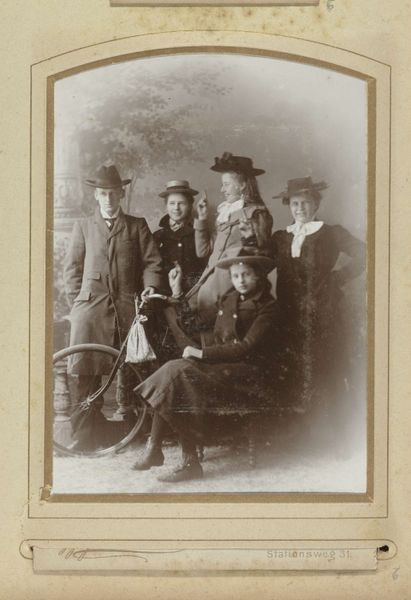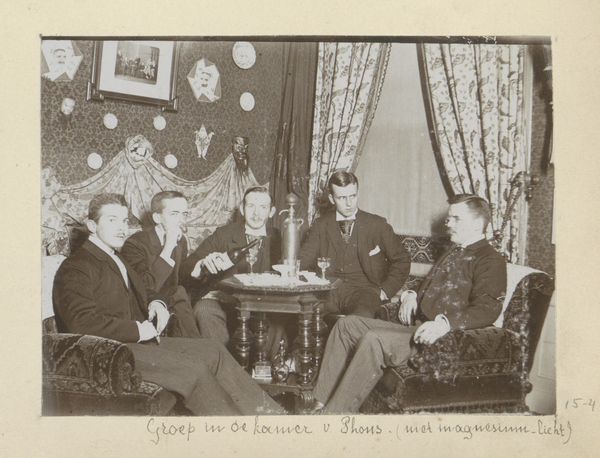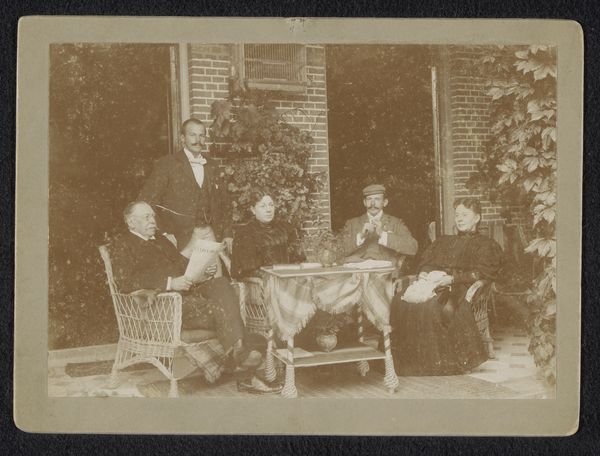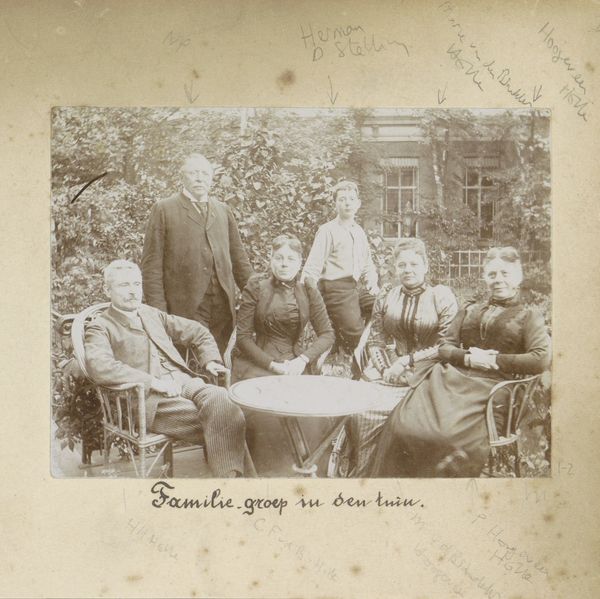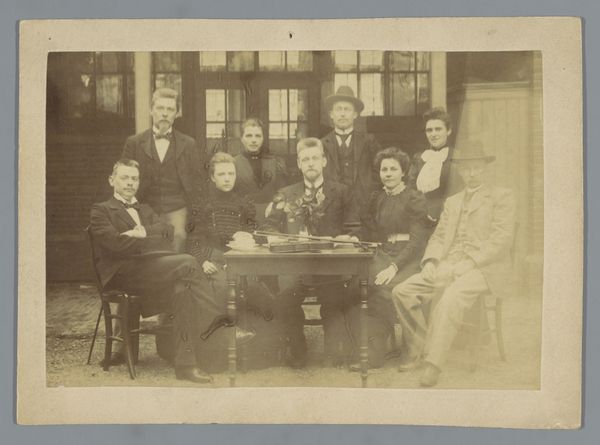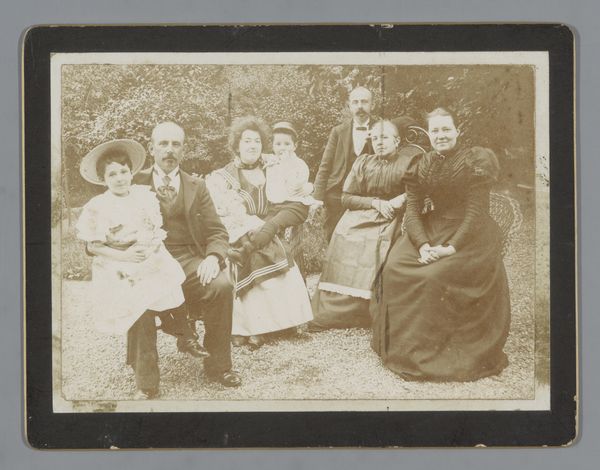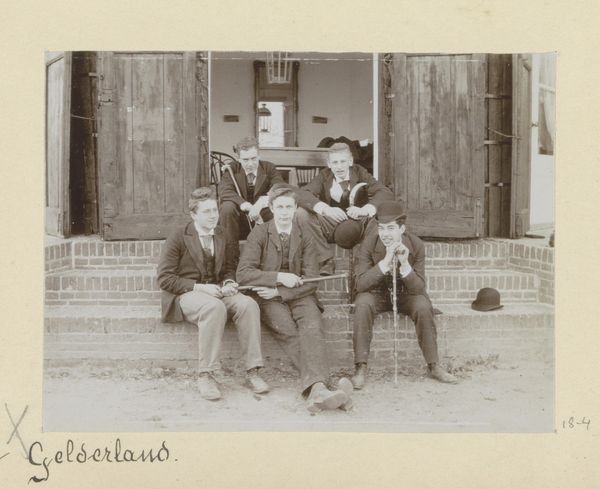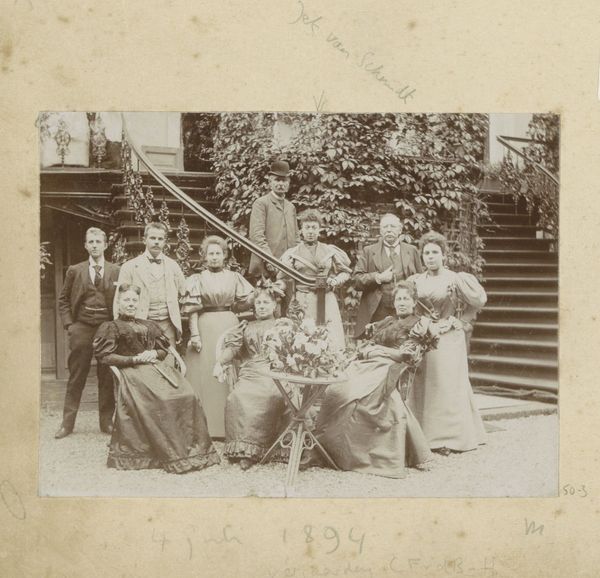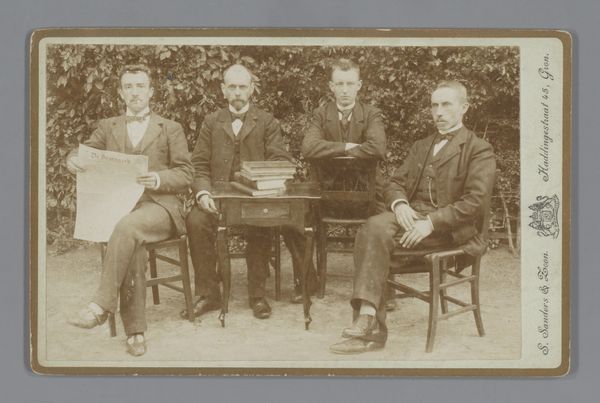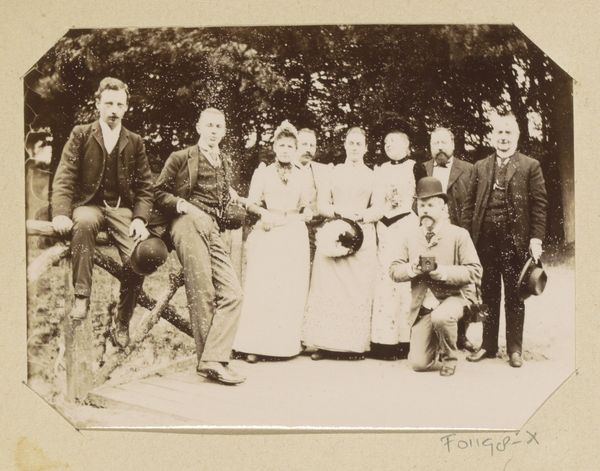
photography, gelatin-silver-print
#
portrait
#
pictorialism
#
photography
#
historical photography
#
group-portraits
#
gelatin-silver-print
#
19th century
#
genre-painting
Dimensions: height 80 mm, width 108 mm
Copyright: Rijks Museum: Open Domain
Editor: We’re looking at "Groepsportret van een kaartspelend gezelschap" or "Group Portrait of a Card Playing Company" by Hendrik Herman van den Berg, made in 1892. It’s a gelatin-silver print. It's so fascinating to see a candid scene captured so long ago. What do you see in this piece, particularly considering its historical context? Curator: It’s fascinating to consider how carefully constructed such 'candid' scenes were. Think about the rise of photography and its challenge to painting's dominance in the late 19th century. Genre scenes like this, echoing painted scenes of leisure and middle-class life, became increasingly popular. Van den Berg situates photography as a recorder of social life. Does the setting itself suggest anything to you about the group portrayed? Editor: The light is lovely. They appear well-to-do, possibly on vacation, considering their attire and what looks like a resort-like setting behind them. Is the 'leisure' aspect significant? Curator: Absolutely. This image reflects the aspirations of a rising middle class eager to display its leisure time and access to cultural activities. It also coincides with a growing tourism industry; places like Marienbad were fashionable destinations. How do you think photography democratized portraiture and scene-setting, in ways that painted group portraits never could? Editor: That’s a great point. Paintings of this sort would have been exclusively for the very wealthy. The accessibility of photography opened these kinds of images to a wider segment of society. Did that democratizing effect impact the art world positively or negatively? Curator: That's a very complex debate. Photography provided new avenues for artistic expression while disrupting traditional patronage models. Did it devalue painting, or did it compel painting to evolve, to push into abstraction? The arguments are endless. But I think it's undeniable that photography opened up visual representation to a far broader audience, both as creators and consumers. Editor: I hadn't thought about how disruptive a new medium can be. Thanks, I'm seeing it through a much wider lens now. Curator: And I’m reminded how potent photography can be in shaping perceptions of social class and cultural values. It is an artifact for sociological research and the history of art.
Comments
No comments
Be the first to comment and join the conversation on the ultimate creative platform.
